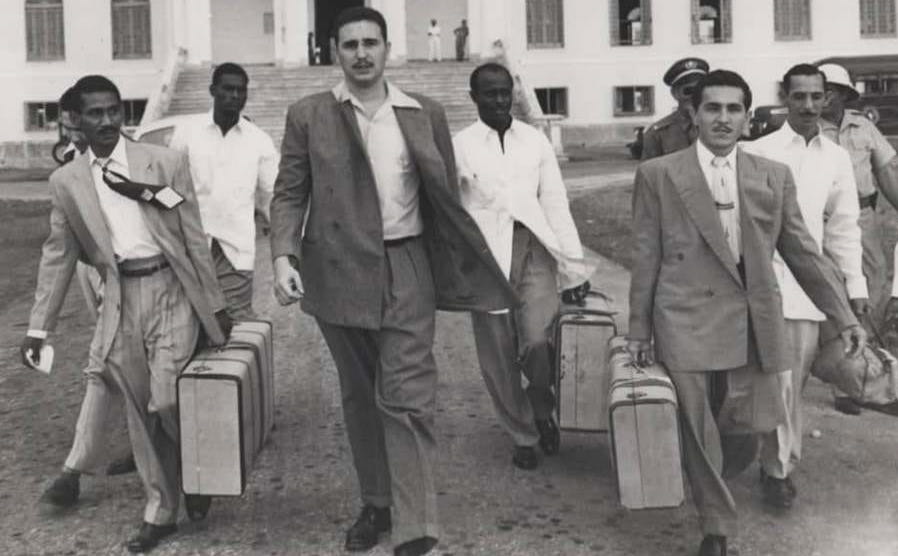On July 11, 2021 (11J), thousands of Cubans, weary of the country's economic disaster, shortages, miserable wages and pensions relative to a rising cost of living, and the lack of effective measures to overcome the crisis, simultaneously took to the streets in some 60 cities in the country to protest. These demonstrators publicly sang the anthem "Patria y Vida" ("Homeland and Life") and called for freedom in an unprecedented event in our political history due to its horizontality, spontaneity, simultaneity and magnitude.
The 11J protests did include some acts of vandalism, hardly shocking in a country where scarcity reigns, there is no freedom of association, and induced civic illiteracy impedes the channeling of grievances through public debate and institutional channels. The demonstration, however, was not preceded by any organization or program to overthrow the Government, no firearms were seized from the more than 1,300 protestors arrested, nor did they cause the deaths of any authorities or police officers. In fact, the only victim that day was the result of a shot fired by the police.
Initially, to harshen their sentences, over 100 people were charged with the crime of sedition, which, being of a political nature, in the Penal Code is punishable "with 10 to 20 years of incarceration, or death." Its application, however, contradicts: 1- the statement found in the article "Political prisoners in Cuba?", published in the newspaper Granma, in which the 11J protesters are accused of being "thieves and aggressors;" that is, of common crimes. If this were really the case, they could not be convicted of sedition, which is a political crime; 2- the Cuban authorities continue to deny the existence of political prisoners in Cuba when, upon prosecuting people for the crime of sedition, they would have to recognize that this is precisely what these people are; 3- all the detainees were born after 1959, and were brought up under a social engineering project designed to create a "new man," which should entail recognizing this project's failure.
For the judicial process, according to official information (Granma, January 24, 2022), the Prosecutor's Office received 117 case files in the preparatory phase, charging 790 people. Of those 117 cases, 110 had been submitted to the courts, with 710 defendants. Of them, 27 were under 16 years old, and another 28 were between 16 and 18.
The sentences requested by the Prosecutor's Office of the first 172 courts ranged up to 26 years in prison. One of them, Walnier Luis Aguilera Rivera, from the capital's La Güinera neighborhood, is 21 years old and faces 23 years in prison, which illustrates the harshness of these sentences sought and how disproportionate they are to the severity of the events in question.
In 2003, between March 18 and 20, in response to the growth and visibility that the opposition movement was gaining, including De Cuba magazine and the Varela Project, 75 dissidents, activists and independent journalists were arrested, under Law 88 for the "Protection of National Independence and the Economy of Cuba" (Gag Law), subjected to summary trials at the beginning of April, and sentenced to prison terms between 6 and 28 years. On that occasion, those convicted were not seized with any firearms or subversive schemes either, but rather with office equipment: typewriters, computers, fax machines and copies of published articles.
Two court cases prior to 1959
On July 26, 1953, at dawn, on Carnival day, the guards at the Moncada barracks in Santiago de Cuba and Carlos Manuel de Céspedes, in Bayamo, suffered a surprise attack by more than 100 armed insurgents dressed in Army sergeant uniforms. The attackers killed 19 military personnel, including three officers. They lost 6 of their own in their attack, and 55 were later executed. In other words, the event produced more than 90 deaths and dozens of injuries.
After the trial the harshest sentences handed down were 15 and 13 years, for Fidel Castro, and his brother Raúl, respectively. After just 22 months they were released under a general amnesty issued by the Government.
In another case prior to 1959, in February of 1917 the Liberal Party rejected the results of the presidential elections of November 1916, dismissing them as fraudulent, and staged the insurrection known as La Chambelona, led by the former president and general during the War of Independence José Miguel Gomez. The insurgents, after dominating the eastern provinces of the country, were defeated. On March 8, 1917 José Miguel Gómez was arrested along with his escort. For the deaths and injuries caused by the uprising, the courts sentenced several of the rebels to death. President Mario García Menocal, however, commuted their death sentences to life imprisonment, and on March 18, 1918, after less than a year in prison, he pardoned them all, including José Miguel Gómez.
Significantly, several politicians close to the president suggested that prisoner José Miguel Gómez be forced to walk down the Paseo del Prado (in an act of repudiation) before being incarcerated. García Menocal objected, responding flatly: "You forget that this man who is imprisoned is a general of the War of Independence... a mambí who earned glory in combat ... today he is my adversary, but he was my comrade in the war."
The events before 1959 were judged according to the 1901 Constitution, which endorsed the right of association, assembly, expression and public demonstration; and the 1940 Constitution, which added to the above the right to parade and form political organizations opposed to the regime, made punishable any prohibitions or limitations on citizens' participation in the political life of the nation, and established the legitimacy of struggle to protect individual rights.
The events after 1959 were judged according to the Constitution of 1976, and that of 2019, under which there is no division of powers, and "freedoms" are limited to those exercised within mass associations created by the State and constitutionally subordinated to the Party, which wields power.
The foregoing should suffice to demonstrate the legal regression in Cuba after 1959.
